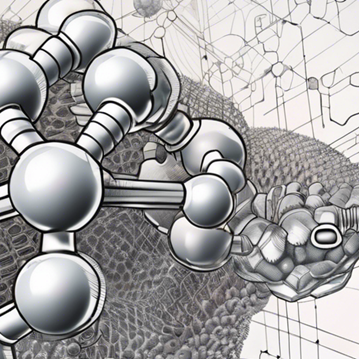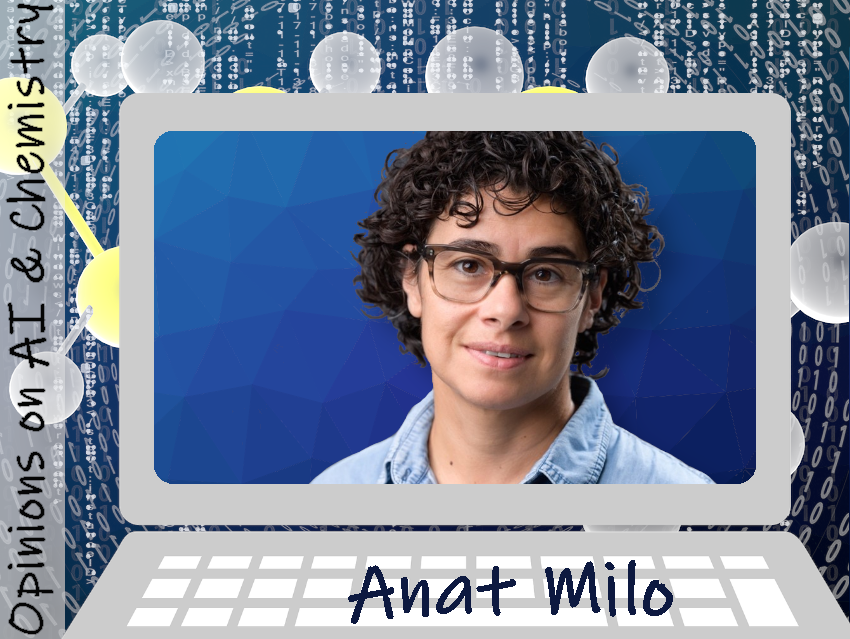The intersection of chemistry and artificial intelligence (AI) is a fascinating area that attracts a lot of attention in both research and industry. We talked to people working in the field about the potential of AI to revolutionize chemical research, but also concerns, (current) limitations, and ethical implications for chemical applications. We also asked for ideas to try or experiment with, as well as useful articles and videos for beginners and advanced users.
Associate Professor Anat Milo, Ben-Gurion University of the Negev, Israel, works on experimental, computational, and statistical strategies for the design and study of selective catalytic reactions.
What fascinates you about AI?
It has always fascinated me that artificial intelligence (AI) caught on as a name. Maybe because I view computer algorithms as being complementary to, rather than mimicking, human thinking. Computers can easily solve tasks that we do not enjoy or are innately not good at, such as collecting and managing big data or finding hidden patterns in vast chemical spaces. Still, I recently read an article by Tom Chatfield about the origin of the name AI and have a renewed appreciation for the concept.
- How Artificial Intelligence Got Its Name,
Tom Chatfield,
The Atlantic 2016.
The use of the word intelligence emphasizes that along with the deluge of advancements these technologies offer, they are forever entwined with the imperfections of our thinking, or as eloquently described in the article these are “marvelous, imperfect extensions of human will, enmeshed within all manner of biases and unintended consequences.”
Is there anything we should fear?
Since our biases and limitations are carried into the technologies we develop, they can boost our ability to inflict pain and suffering just as easily as they can streamline our positive endeavors. So ultimately, I guess I fear humans more than technology.
To give a somewhat innocent example, in 2016 Microsoft’s chatbot, Tay.ai, was released on Twitter and within 24 hours became worryingly offensive [1]. The abhorrent content of Tay’s tweets seemed to result from a coordinated effort by trolls to exploit its built-in “repeat after me” function. On the bright side, the pace of this learning process was impressive, but it was an alarm call for designers to build safeguards into technology because of the human tendency to create chaos.
Research shows that despite vast improvements, biases still exist in advanced large language models (LLMs) such as ChatGPT [2,3]. In defense of AI, these concerns have always been in the background of any human technological advance.
- In 2016, Microsoft’s Racist Chatbot Revealed the Dangers of Online Conversation: The bot learned language from people on Twitter—but it also learned values,
Oscar Schwartz,
IEEE Spectrum, November 25, 2019. - ChatGPT Replicates Gender Bias in Recommendation Letters,
Chris Stokel-Walker,
SCIAM, November 22, 2023. - ChatGPT leans liberal, research shows,
Gerrit De Vynck,
The Washington Post, August 16, 2023.
Can you recommend a good article/video/website for beginners and one you enjoyed recently?
One of the most powerful and perhaps underappreciated aspects of data science for chemistry is the art of data visualizations. Simple graphic language can convey complex messages that are often difficult to describe in text. Consequently, visualizations can create a bridge between human and machine learning, providing unique synergistic insights. My guess is that if the robot overlords take over, they will eliminate fancy visualizations from the scientific literature because they do not need them. So, before that happens, I would encourage exploring some impressive examples at https://informationisbeautiful.net.
Do you have something for our readers to try out or experiment with?
I would recommend trying out photosonic AI art generator at https://writesonic.com/photosonic-ai-art-generator. Below is an image produced for the prompt “intricate sketch art depicting a steroid molecule with a futuristic AI backdrop, precise lines and shading, high resolution, scientific illustration, mixed media artwork, 4K resolution, micron pens, cross-hatching technique” produced through the “enhance prompt” button from my original prompt “sketch art depicting steroid molecule with AI backdrop, intricate details, high resolution”.
Though text-to-image generation has come a long way we still have a major role here too, not only coming up with interesting prompts but providing a growing database for these algorithms to learn.

Thank you very much for the insights.
back to the overview “Opinions on AI & Chemistry”


